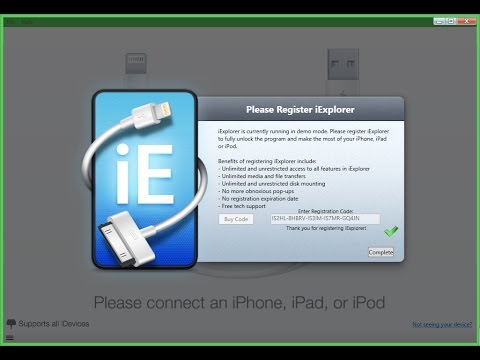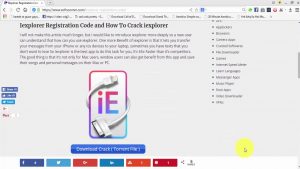

The multipart payload will therefore bypass detection. The OWASP ModSecurity Core Rule Set (CRS) is affected by a partial rule set bypass for HTTP multipart requests by submitting a payload that uses a character encoding scheme via the Content-Type or the deprecated Content-Transfer-Encoding multipart MIME header fields that will not be decoded and inspected by the web application firewall engine and the rule set.
#Iexplorer registration code 4.1.14 upgrade
Integrators and users are advised to upgrade to 3.2.2 and 3.3.3 respectively. The legacy CRS versions 3.0.x and 3.1.x are affected, as well as the currently supported versions 3.2.1 and 3.3.2. A restricted resource, access to which would ordinarily be detected, may therefore bypass detection.

Depending on the "charset", this response can not be decoded by the web application firewall. A client can issue an HTTP Accept header field containing an optional "charset" parameter in order to receive the response in an encoded form. The OWASP ModSecurity Core Rule Set (CRS) is affected by a response body bypass. Integrators and users are advised to upgrade to 3.2.2 and 3.3.3 respectively and to configure a CRS paranoia level of 3 or higher.

Short subsections of a restricted resource may bypass pattern matching techniques and allow undetected access. A restricted resource, access to which would ordinarily be detected, may be exfiltrated from the backend, despite being protected by a web application firewall that uses CRS. The OWASP ModSecurity Core Rule Set (CRS) is affected by a response body bypass to sequentially exfiltrate small and undetectable sections of data by repeatedly submitting an HTTP Range header field with a small byte range. Successful exploitation of this vulnerability could allow an unauthenticated remote attacker to execute arbitrary commands on the targeted device. An unauthenticated remote attacker could exploit this vulnerability by sending a specially crafted http request on the targeted device. This vulnerability exists in Tacitine Firewall, all versions of EN6200-PRIME QUAD-35 and EN6200-PRIME QUAD-100 between 19.1.1 to 22.20.1 (inclusive), due to improper control of code generation in the Tacitine Firewall web-based management interface.

Successful exploitation of this vulnerability could allow an unauthenticated remote attacker to view sensitive information on the targeted device. This vulnerability exists in Tacitine Firewall, all versions of EN6200-PRIME QUAD-35 and EN6200-PRIME QUAD-100 between 19.1.1 to 22.20.1 (inclusive), due to insecure design in the Tacitine Firewall web-based management interface. Successful exploitation of this vulnerability could allow an unauthenticated remote attacker to perform session fixation on the targeted device. This vulnerability exists in Tacitine Firewall, all versions of EN6200-PRIME QUAD-35 and EN6200-PRIME QUAD-100 between 19.1.1 to 22.20.1 (inclusive), due to improper session management in the Tacitine Firewall web-based management interface.


 0 kommentar(er)
0 kommentar(er)
